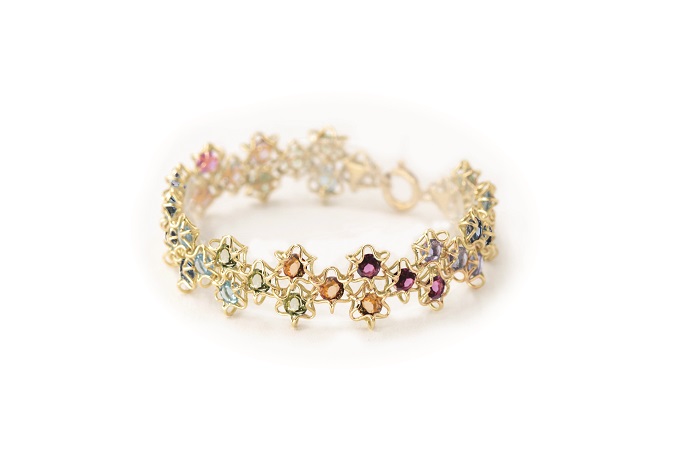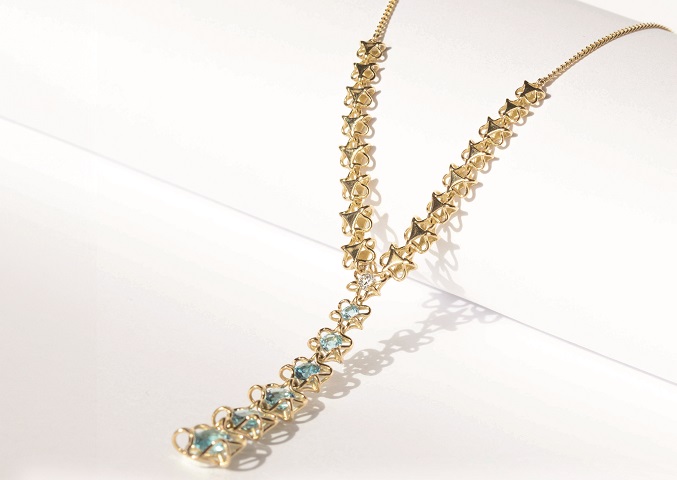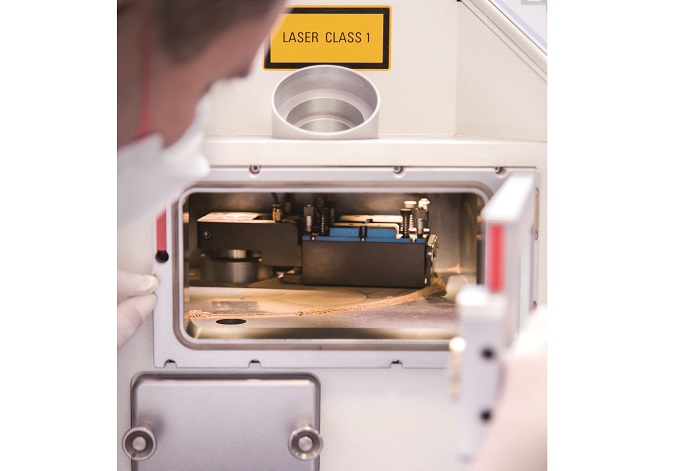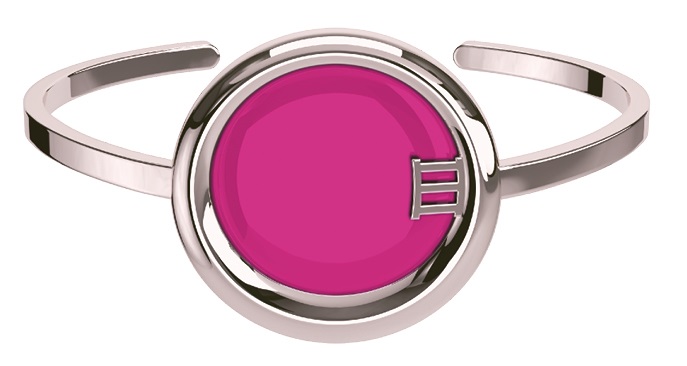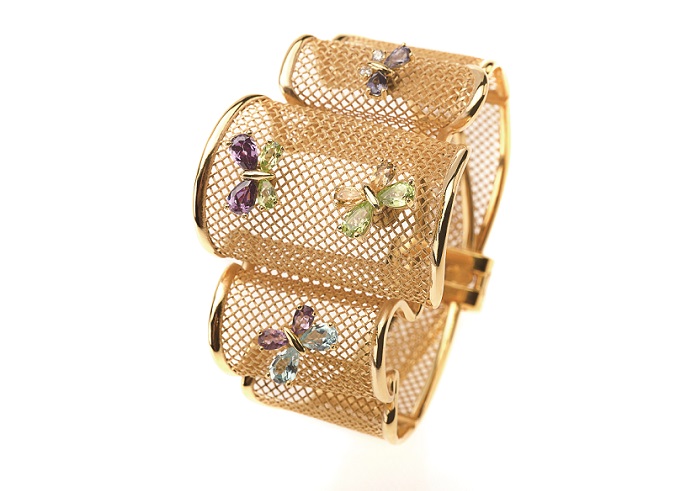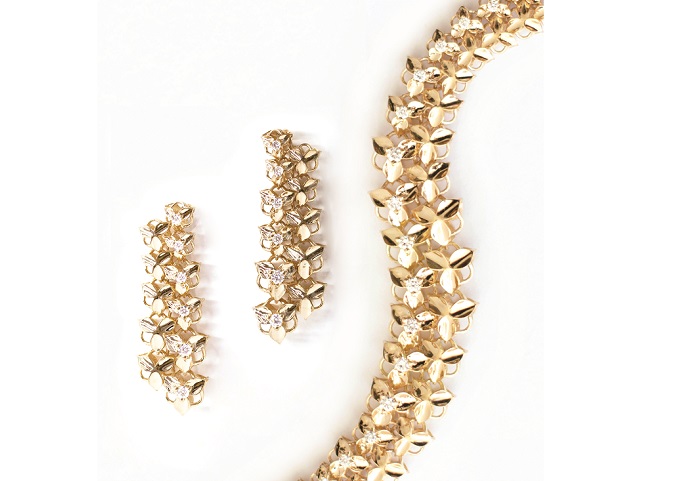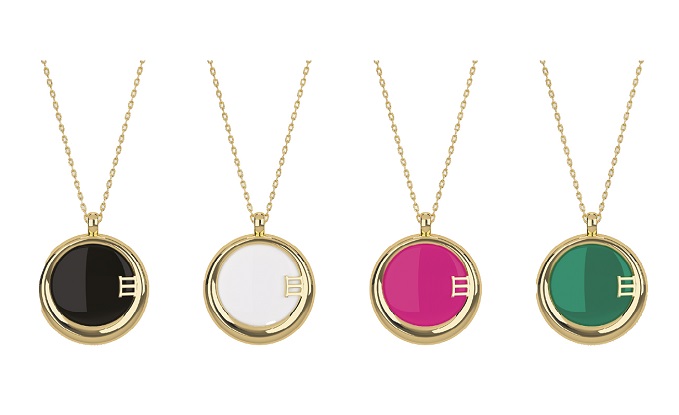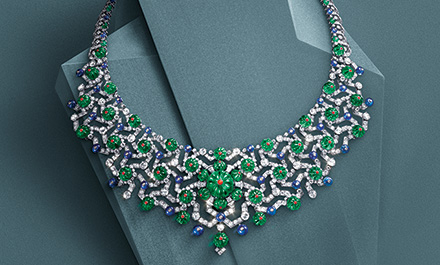This article first appeared in the JNA September/October 2023 issue.
The revolutionary digital technology of printing jewellery direct from precious metal powders has finally come into its own. After more than a decade of intense research, massive investment and consistent encouragement and knowledge transfer down the supply chain, pioneers of the process are pleased: International jewellery brands and designers are finally embracing the potential of innovation and differentiation for their products via 3D printing.
Direct metal jewellery printing is achieved by a process known as Additive Manufacturing (AM), which involves the use of a laser beam to melt atomised precious metal powders and build CAD jewels on dedicated build platforms and supports – a process of adding precious materials within rigorous parameters.
The process is given different tags and acronyms – Laser Metal Fusion (LMF) or Laser Beam Powder Bed Fusion (PBF-LB) or Selective Laser Melting (SLM) technology.
Providers of the printing/build service are usually precious metal alloy manufacturers and suppliers. They have in-house AM facilities set up in partnership with a recognised AM machine manufacturer. They develop their own precious metal alloys, atomise their powders, develop the build plates and supports, and have in-house engineers and tech experts to manage the whole process including recycling and refining the metal with the intention of reducing waste and making the process extremely sustainable.
Manufacturers and designers agree that platinum performs best for the AM process, especially because cast platinum encounters problems such as porosity. However, in terms of numbers, gold pieces seem to be ahead of platinum.Key to recent AM success is the quality of atomised powder alloys and increased accuracy of machines plus creative knowledge on how to get the best out of the process.The choice of the type of design to print is crucial. The rule is: If it can be cast, do not print. Lightweight voluminous pieces with a tailored weight and thickness are a favoured choice.
Titanium jewellery production is increasing, too. The metal is lighter than the traditional precious metals used in jewellery and thus offers the advantage of creating large, statement pieces without affecting wearability.
A pioneer in the field of precious metal AM is Progold SpA in Trissino, Italy that has been printing jewels for more than a decade using the process of SLM.
Luca Dal Sasso, sales manager of Progold said, "The best news is that brands we work with now more and more understand the process and its possibilities, providing us tailored 3D files specifically made to exploit the features of the SLM process."
The current trend is moving from medium and small producers to big international brands, Dal Sasso observed.
The process has three main steps. "First, we analyse and support the customer’s 3D CAD file, then we proceed to prototype development and finally, we move on to production of the jewellery pieces. The customer receives the completed piece in rough form, ready for finishing and stone setting," he explained.
Producing all the precious metal powders internally, Progold prints in 18-karat yellow, red and white gold, 950 platinum and titanium, Dal Sasso added.
Design-led progress
A reason for current success is that design thinking has moved beyond conventional - think, cast - designs and best results seem to be achieved when there is good cooperation between designers and manufacturers.
German designer Tom Rucker is a pioneer in using printed platinum components as building blocks for his complex award-winning jewels. He has components printed by a German metals specialist using their proprietary atomised platinum alloy powders.
"AM delivers the quality and precision I require for my custom pieces," he explained.
Rucker combines printed components with his laser-welding technique. For his turquoise ring, the shank was printed directly in platinum 950 from a CAD file and later filled in with a micro laser-welded structure. The turquoise was welded into the printed setting and finished with pink sapphires. "Such an accurate and polished edge will be impossible with traditional stone techniques," he noted.
In Vienna, Austria, an architect-turned-jeweller propelled a classic 1964 jewellery brand, Boltenstern, into the future with direct metal 3D printed jewels.
The revolution happened when the daughter of the founder, Marie Boltenstern, moved to the helm of the company in 2015. Her architecture education and practice had focused on emerging technologies: Computational design and digital fabrication techniques such as 3D printing, robots and CNC machines.
"My passion for complex geometry and coding of shapes became a foundation for our designs. They are based on complex mathematical codes and cannot be crafted by hand or conventional techniques," said Marie, who is the brand's managing director and head of design.
Each piece, printed at a production partner’s facility in the United Kingdom, is a complete jewel with closures, and some with gemstones enclosed during the printing process. Most are in recycled 18-karat gold but she does special custom productions in platinum, an excellent material for printing. Post-production is at the atelier in Vienna where skilled craftsmen, some who have worked with the brand for more than 20 years, finish each piece.
According to Marie, working with algorithms allows the brand to customise pieces at scale through in-house developed customisation tools for both B2C and B2B clients.
"Our aim is to establish a decentralised print-on-demand business model with no waste, low stock and personalised customer journey. We take accountability for what we bring to life, and our aspiration is to behave with integrity and responsibility at every step. As a female-led team, we work on projects to empower women in tech and young entrepreneurs, which form part of our customer community. This is specifically interesting for forward-going markets such as Asia and the US," she shared.
Nuovi Gioielli in Mussolente, Italy, advanced its core jewellery manufacturing competency with 3D printed jewels. The company bought its first machines more than a decade ago and now creates precious collections for its own brands while providing printing services for overseas brands.
Damiano Carlesso of the Research and Development/Design team of Nuovi said, "Mixing different production techniques has always been our specialty. Now we can print a jewel and finish it manually or we can add intermediate steps to get more precision or special decorations or create jewels with a mixture of techniques: LMF plus casting plus CNC or LMF plus stamping plus laser marking."
LMF enables the creation of very light but voluminous structures; completely closed hollow volumes or articulated and movable parts. Each of these characteristics applied to the jewel is an added value to the final piece. The most used are platinum, palladium gold as well as rose and yellow gold.
The company’s fabric-like patented "MetalPixel" embodies the essence of what can be achieved with LMF – its applications are endless. "We collaborated with powder and printer manufacturers to better develop the process and envisage it as a bridge from jewellery to fashion," Carlesso enthused.
Innovation upon innovation
Denmark-based designer Simone Faurschou who loves to build bridges between jewellery and digital technology has created a jewellery "first" – developing a precious-metal 3D-printed collection in partnership with tech futurist Cathy Hackl, with an NFC (near field communication technology) chip embedded in each piece.
The limited-edition collection called Frillz comprises 100 necklaces and 100 bracelets whose NFC chip can be scanned with a smart phone.
Hackl, described as the "godmother of the metaverse" who works with luxury brands to embrace digitalisation and tech, combined her expertise with Faurschou’s tech-savvy design and jewellery-making skills. "It has been such fun for us both to work across our different industries, a collaboration that has resulted in a first of its kind for jewellery," said Faurschou.
The technology allows the customer to scan the jewellery piece, mint their digital asset such as an NFT (Non-Fungible Token) that takes them straight to their proof of ownership or authentication on the blockchain, she explained. "It took me several months to work out how to implement the tech into the metal to ensure it was still scannable with a smart phone."
Faurschou uses a gemstone-like bio-resin in translucent colours of black, white, pink and green to create simple elegant jewels, each cleverly hiding the chip living within.
She designed and developed all the pieces, with prototyping at her workshop studio in Copenhagen.
"We limited the production of pieces in solid 18-karat gold to 10 necklaces and 10 bracelets and the remaining 180 pieces are in sterling silver and gold vermeil, with price points from around US$500 to US$5,000. The pieces will be launched sometime later this year," the designer revealed.
New horizons
According to proponents, the benefits of AM are manifold. The process accommodates freedom and innovation of design. It also enables resource efficiency and material innovation with the capability to shift design constraints of traditional techniques, thereby encouraging hollow designs and integrated features. Application development cycles are also very short.
Processing requires less resource compared to traditional metalworking equipment, and there are no tool costs. Low material input factor also reduces capital lockup.
AM is often a solution for components of a piece difficult to produce by casting. Moreover, the non-consolidated precious powder of the production bed can be reused. The portion of scrap needing recycling is small, which is a significant advantage when working with precious metals.
AM, however, comes with its own set of challenges. One is ensuring the surface quality of the finished product meets the highest precious jewellery standards. With advanced metal powder atomisation technology, the surface quality of precious metal AM products is now smoother and easier to finish.
At the same time, increased accuracy and efficiency of the printers have made the process more stable and automatic while reducing rough surfaces.
Designers and engineers likewise need accurate knowledge on positioning the jewel on the build plate and its supports as well as the treatment necessary for spots left on the surface when supports are removed.
Proponents recognise the need for advanced training in the whole ethos of design and production of AM jewels. Jewellery schools are now offering students comprehensive training in different approaches, imparting knowledge about the major differences between designing for casting and designing for AM.
Since 2016, Progold has been collaborating with design schools each year to introduce young creative talents to the possibilities of direct metal 3D printing and provide them with an opportunity to get in touch with the big brands in the jewellery field, Dal Sasso revealed.
The revolution is happening and innovative designers and entrepreneurs are using digital technology such as AM as the starting point to revolutionise the whole industry with sustainable printing-on-demand solutions. Marie commented, "The technology is now available to consciously develop lasting and meaningful change in the industry via innovation."


